
Soufriere: The Heartbeat of Saint Lucia
Discover Soufriere: A paradise of stunning landscapes, rich history, and vibrant culture in the heart of Saint Lucia. Explore the Pitons, Sulphur Springs, and pristine beaches.
Nestled between the lush, forested hills and the sparkling Caribbean Sea, Soufriere is a gem in the crown of Saint Lucia. This picturesque town is known for its dramatic landscapes, including the iconic Pitons, twin volcanic spires that rise majestically from the ocean. The Pitons are a UNESCO World Heritage site and offer some of the most breathtaking views and hiking experiences in the Caribbean. Soufriere is also home to the world’s only drive-in volcano, Sulphur Springs. Visitors can drive right up to the edge of the crater and witness the bubbling sulfuric pools and fumaroles. The nearby mud baths are a popular attraction where you can soak in mineral-rich waters believed to have therapeutic properties. The town itself is a charming mix of vibrant Caribbean culture and colonial history. Stroll through the streets to see colorful buildings, local markets, and friendly residents. Don’t miss a visit to the Soufriere Estate, which includes the beautiful Diamond Falls Botanical Gardens and a historic plantation house. The gardens are a feast for the senses, with exotic plants, cascading waterfalls, and the soothing sounds of nature. For beach lovers, Soufriere offers some of the best snorkeling and diving spots on the island. Sugar Beach, located between the Pitons, is a pristine white-sand beach with crystal-clear waters teeming with marine life. Whether you're exploring underwater or simply relaxing on the shore, the beauty of Soufriere will leave you spellbound.
Local tips in Soufriere
- Visit early in the morning to beat the crowds at popular sites like the Pitons and Sulphur Springs.
- Carry water and wear comfortable shoes for hiking the Pitons.
- Try local Creole cuisine at one of the town’s many restaurants to get a taste of authentic Saint Lucian flavors.
- Bring swimwear and a towel if you plan to enjoy the mud baths at Sulphur Springs.
- Hire a local guide for the best experience and insider knowledge of the area.
Soufriere: The Heartbeat of Saint Lucia
Nestled between the lush, forested hills and the sparkling Caribbean Sea, Soufriere is a gem in the crown of Saint Lucia. This picturesque town is known for its dramatic landscapes, including the iconic Pitons, twin volcanic spires that rise majestically from the ocean. The Pitons are a UNESCO World Heritage site and offer some of the most breathtaking views and hiking experiences in the Caribbean. Soufriere is also home to the world’s only drive-in volcano, Sulphur Springs. Visitors can drive right up to the edge of the crater and witness the bubbling sulfuric pools and fumaroles. The nearby mud baths are a popular attraction where you can soak in mineral-rich waters believed to have therapeutic properties. The town itself is a charming mix of vibrant Caribbean culture and colonial history. Stroll through the streets to see colorful buildings, local markets, and friendly residents. Don’t miss a visit to the Soufriere Estate, which includes the beautiful Diamond Falls Botanical Gardens and a historic plantation house. The gardens are a feast for the senses, with exotic plants, cascading waterfalls, and the soothing sounds of nature. For beach lovers, Soufriere offers some of the best snorkeling and diving spots on the island. Sugar Beach, located between the Pitons, is a pristine white-sand beach with crystal-clear waters teeming with marine life. Whether you're exploring underwater or simply relaxing on the shore, the beauty of Soufriere will leave you spellbound.
When is the best time to go to Soufriere?
Iconic landmarks you can’t miss
Soufrière Drive In Volcano
Explore the Soufrière Drive-In Volcano, a geothermal marvel and unique tourist attraction in St. Lucia offering breathtaking landscapes and unforgettable experiences.
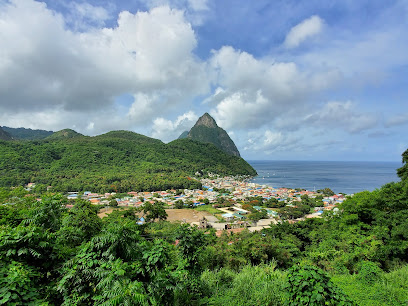
Sugar Beach, a Viceroy Resort
Discover the luxurious oasis of Sugar Beach, a Viceroy Resort, where stunning views and exceptional service create the perfect getaway in Saint Lucia.
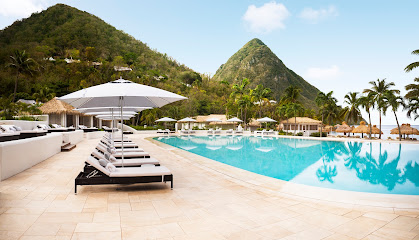
Diamond Falls Botanical Gardens & Mineral Baths
Immerse yourself in the tropical beauty of Diamond Falls Botanical Gardens & Mineral Baths, a serene escape in St. Lucia with stunning flora and healing waters.
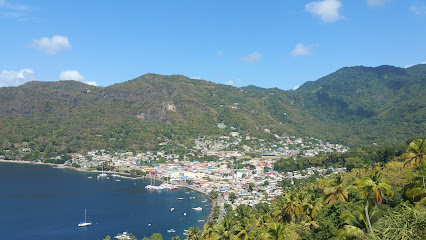
St Lucia Sulphur Springs
Experience the rejuvenating mud baths and stunning landscapes of St. Lucia Sulphur Springs, the Caribbean's only drive-in volcano.
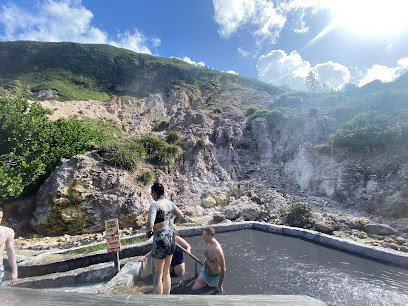
Toraille Waterfall villas and atv
Discover the serene beauty of Toraille Waterfall in St. Lucia, where nature and adventure converge amidst breathtaking landscapes.

Tet Paul Nature Trail
Experience the breathtaking views and lush landscapes at Tet Paul Nature Trail in Saint Lucia, a must-visit for nature lovers and hikers.
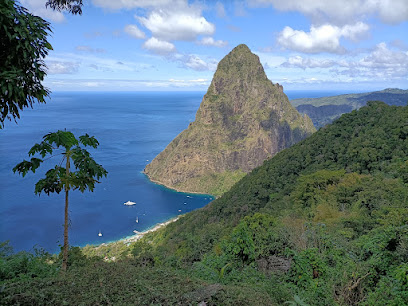
Saint Lucia National Trust
Explore the rich cultural heritage and natural beauty of Saint Lucia National Trust, where history and nature come together in a breathtaking setting.
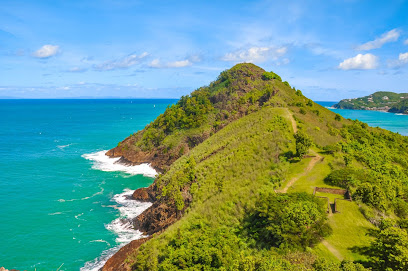
Hotel Chocolat
Experience the ultimate chocolate getaway at Hotel Chocolat in Soufriere, St. Lucia, where luxury meets indulgence in a tropical paradise.

Morne Coubaril Historical Adventure Park
Experience the adventure and history of St. Lucia at Morne Coubaril Historical Adventure Park, a captivating destination for every traveler.
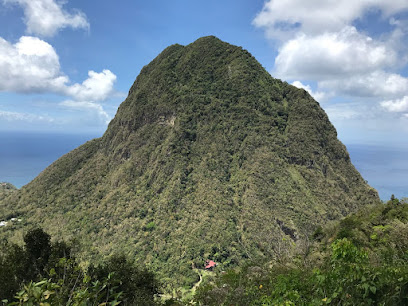
Piton Falls
Explore the stunning Piton Falls in St. Lucia, a natural wonder where cascading waterfalls meet lush tropical landscapes for an unforgettable experience.
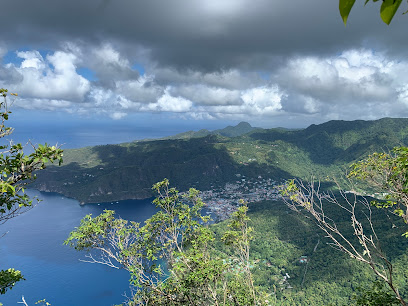
Gros Piton Nature Trail
Discover the breathtaking views and lush landscapes of Gros Piton Nature Trail, a must-visit hiking destination in beautiful Saint Lucia.
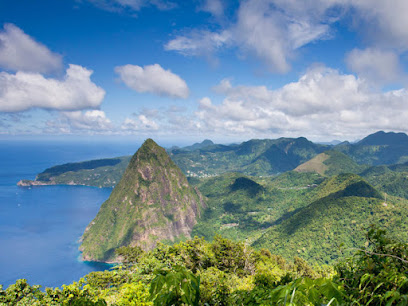
Project Chocolat
Experience the rich world of chocolate at Project Chocolat in St. Lucia, where flavor meets tradition in a lush Caribbean setting.
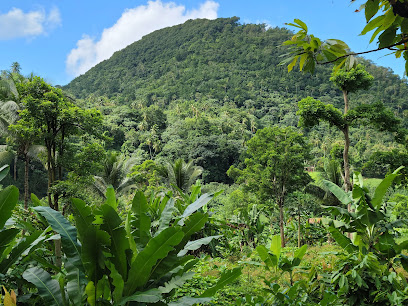
Orlando's Restaurant & Bar
Discover the authentic Creole flavors of St. Lucia at Orlando's Restaurant & Bar, a culinary treasure in Soufriere.

Fedo's
Discover the vibrant flavors of St. Lucia at Fedo's, a beloved restaurant offering authentic Caribbean cuisine in a welcoming atmosphere.
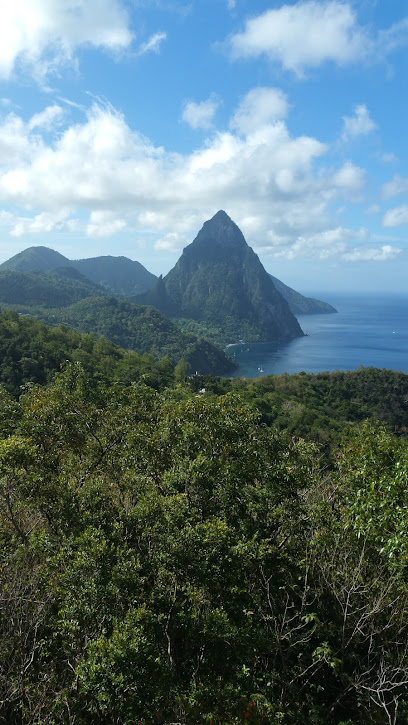
Petit Peak Restaurant
Discover the flavors of St. Lucia at Petit Peak Restaurant, where local ingredients meet breathtaking views in a charming atmosphere.
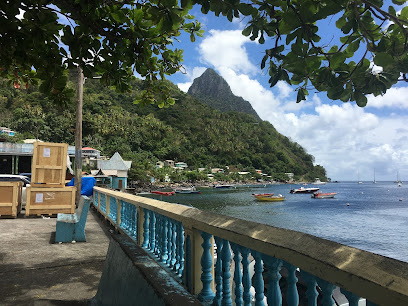
Essential places to dine
Orlando's Restaurant & Bar
Experience authentic Creole cuisine at Orlando's Restaurant & Bar in Soufriere, St. Lucia – where every dish tells a story.
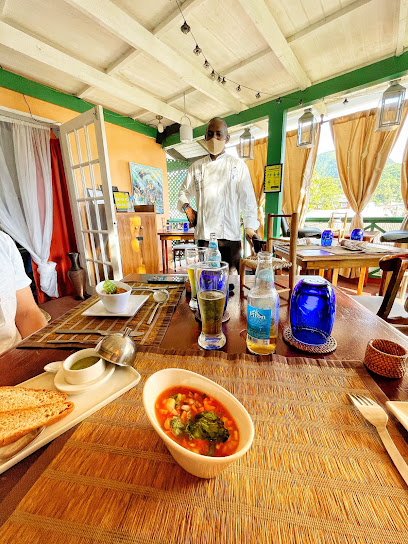
Fedo's
Discover the authentic flavors of St. Lucia at Fedo's – a delightful restaurant offering fresh seafood and Caribbean delicacies in a warm atmosphere.
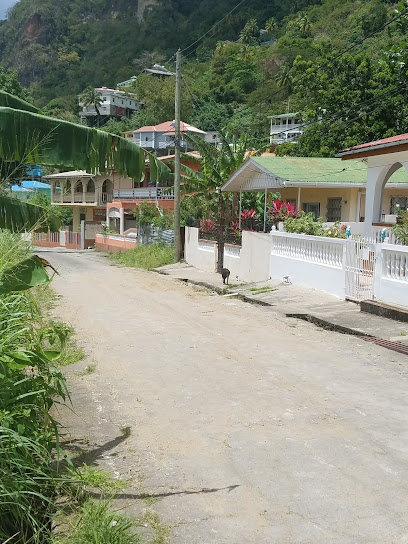
Petit Peak Restaurant
Experience authentic Caribbean cuisine with breathtaking views at Petit Peak Restaurant in Soufriere, St. Lucia.

Island Chef
Experience authentic Caribbean cuisine at Island Chef in Palmiste, St. Lucia - where local flavors meet warm hospitality.
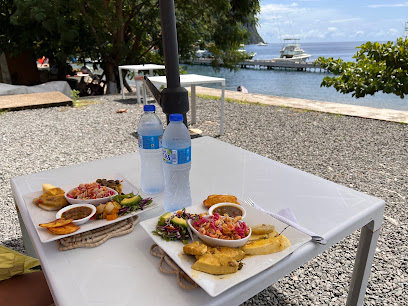
The Mango Tree
Experience authentic St. Lucian cuisine at The Mango Tree Restaurant, nestled in the stunning Stonefield Estate Resort with breathtaking Caribbean views.
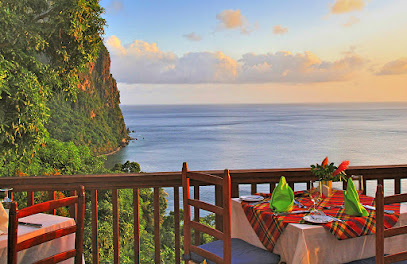
Treetop Restaurant and Bar
Experience breathtaking views and exquisite flavors at Treetop Restaurant and Bar in beautiful St. Lucia.

Seashell Beach Restaurant
Experience authentic Caribbean flavors at Seashell Beach Restaurant on Hummingbird Beach in St. Lucia - where culinary delight meets breathtaking views.
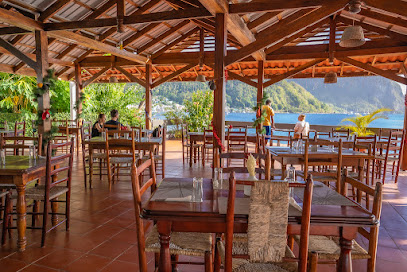
Club Whispers | Restaurant & Bar
Discover culinary delights at Club Whispers - your go-to restaurant and bar in Palmiste, St. Lucia for unforgettable dining experiences.

Sea View Creole Restaurant
Discover authentic St. Lucian cuisine at Sea View Creole Restaurant with breathtaking views and warm hospitality in Palmiste.
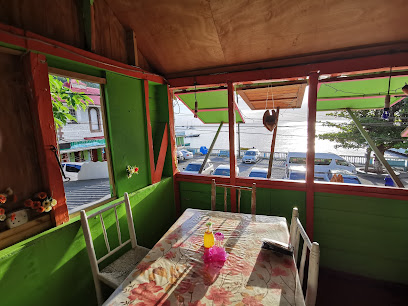
The Dream Restaurant
Experience St. Lucia's rich flavors at The Dream Restaurant – where culinary artistry meets local tradition in a breathtaking setting.

Belle Vue Resturant
Experience the best of Caribbean cuisine with breathtaking views at Belle Vue Restaurant in Soufriere, St. Lucia.
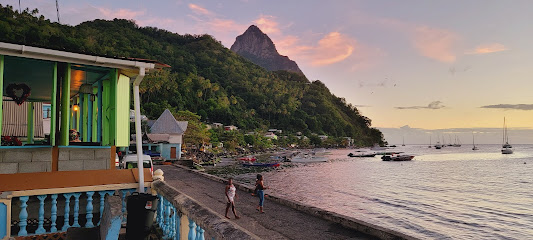
Big Yard
Discover authentic St. Lucian cuisine at Big Yard in Palmiste—where every dish tells a story of flavor and culture.
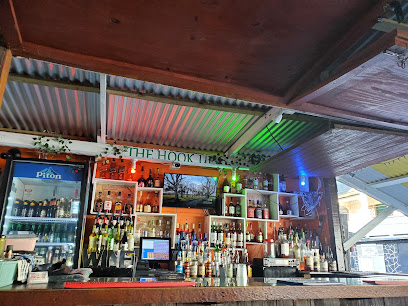
The Container Bar N Grill
Discover authentic Creole flavors at The Container Bar N Grill in Soufriere, St. Lucia - where every meal is a taste of paradise.
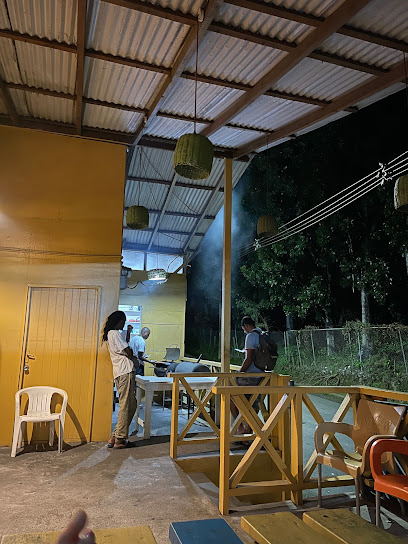
Stone Yard Restaurant and Bar
Experience the vibrant flavors of St. Lucia at Stone Yard Restaurant and Bar in Soufriere - where Caribbean cuisine meets warm hospitality.

The Pull Up
Discover the sweet side of St. Lucia at The Pull Up – your ultimate destination for delicious desserts and refreshing ice creams.

Markets, malls and hidden boutiques
Massy Soufrière
Discover local flavors and vibrant culture at Massy Soufrière, the go-to grocery store in St. Lucia for tourists seeking authentic Caribbean experiences.
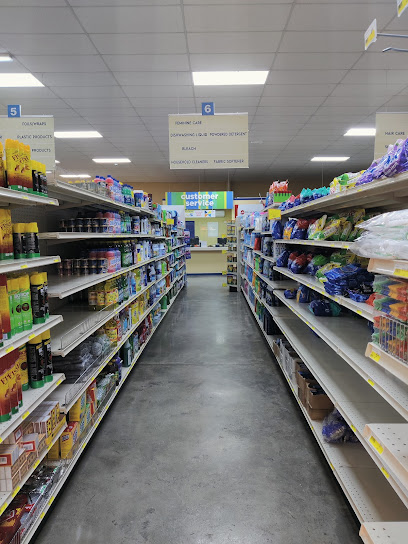
Zaka's Art Café
Discover the charm of Zaka's Art Café in Hummingbird Beach Park, where culinary delights meet local artistry in a stunning St. Lucian setting.
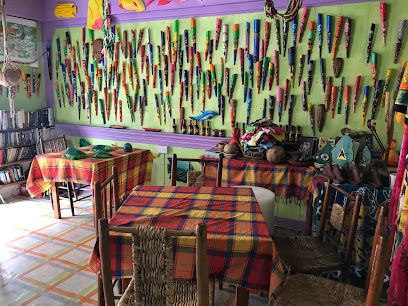
Saltwater Tackle and Supplies
Discover the best fishing gear and local expertise at Saltwater Tackle and Supplies, your ultimate destination for fishing in St. Lucia.

Lizzerts By Lizelle
Discover the sweetest side of St. Lucia at Lizzerts By Lizelle, a dessert shop that blends local flavors with exquisite craftsmanship.

Courts | Soufrière
Explore Courts in Soufrière for an exceptional shopping experience featuring quality home goods and local treasures.
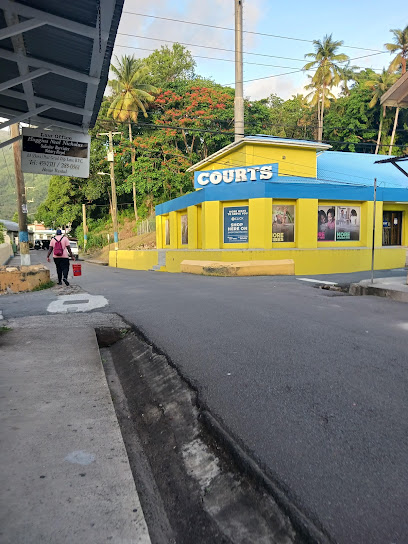
Ti Tak Cafe
Discover the flavors of St. Lucia at Ti Tak Cafe, where local ingredients and Caribbean hospitality meet in a cozy setting.
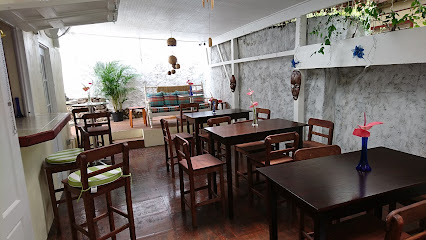
Allain’s Supermarket
Explore Allain’s Supermarket in Soufriere, St. Lucia - A treasure trove of local flavors and everyday essentials nestled in the heart of the island.
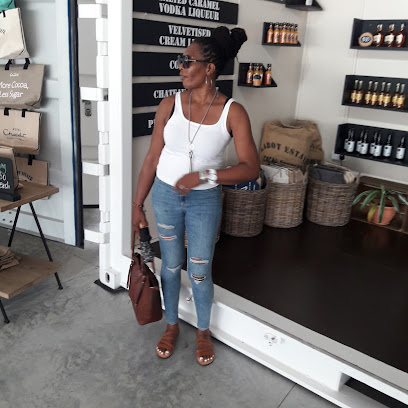
Multimoss
Discover the delightful flavors of Multimoss in Palmiste, St. Lucia – a heavenly ice cream shop offering artisanal creations that tantalize the taste buds.

M&C Pharmacy - Soufriere
Discover the convenience of M&C Pharmacy in Soufriere, your trusted partner for health and wellness needs while exploring the beauty of St. Lucia.
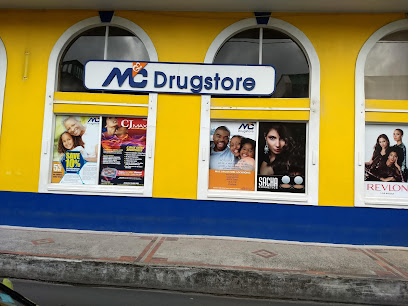
Island Memoires
Discover the charm of Island Memories, a guest house in St. Lucia, where comfort meets local culture amidst lush landscapes and vibrant clothing stores.

Caribe Shaved Ice
Indulge in refreshing shaved ice treats at Caribe Shaved Ice, the perfect tropical escape in St. Lucia with vibrant flavors and stunning views.

Purity Bakery
Discover the delightful flavors of St. Lucia at Purity Bakery, where fresh-baked goods and local treats await every visitor.

Ron's Upholstery
Explore Ron's Upholstery in Soufriere for unique local crafts and quality upholstery services that embody the spirit of St. Lucia.

Shoppers Choice Supermarket
Explore the best of local produce and essentials at Shoppers Choice Supermarket in Palmiste, St. Lucia - your one-stop shop for island delights.

Soufriere Farmers Market
Discover fresh produce, local crafts, and the vibrant culture of St. Lucia at the Soufriere Farmers Market.
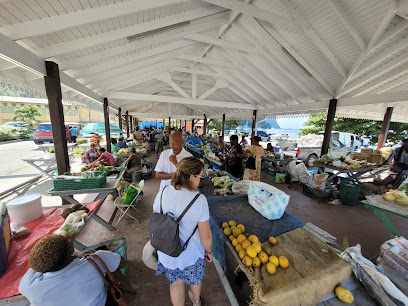
Essential bars & hidden hideouts
Orlando's Restaurant & Bar
Discover the authentic taste of St. Lucia at Orlando's Restaurant & Bar, where Creole cuisine meets breathtaking views.
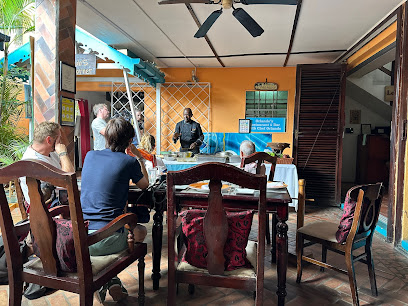
Treetop Restaurant and Bar
Discover the enchanting Treetop Restaurant and Bar in St. Lucia, where exquisite cuisine meets stunning natural beauty for a dining experience like no other.
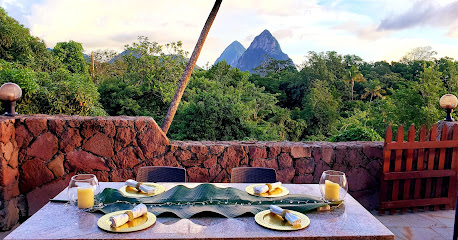
Club Whispers | Restaurant & Bar
Discover the flavors of St. Lucia at Club Whispers, the vibrant restaurant and bar offering delicious Caribbean cuisine and refreshing cocktails.
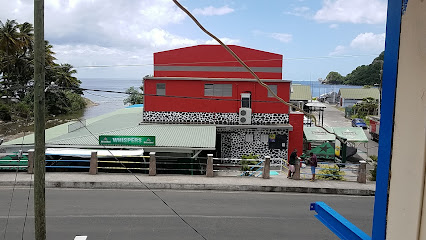
Big Yard
Discover the vibrant flavors of St. Lucia at Big Yard, where local cuisine meets an inviting atmosphere for an unforgettable dining experience.
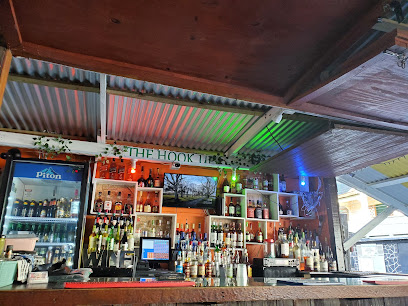
The Container Bar N Grill
Discover the best of St. Lucia's Creole cuisine at The Container Bar N Grill, where every dish tells a story of the island's vibrant culture.
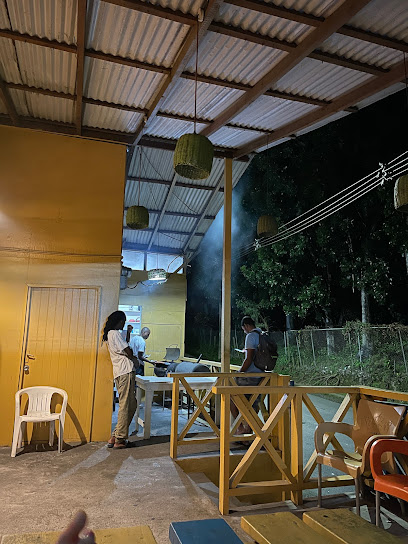
Stone Yard Restaurant and Bar
Discover the vibrant flavors of St. Lucia at Stone Yard Restaurant and Bar, where local cuisine meets a stunning Caribbean atmosphere.

Cheaperz Bar
Discover the lively atmosphere and affordable drinks at Cheaperz Bar, a local favorite in Palmiste, St. Lucia, perfect for relaxing and socializing.
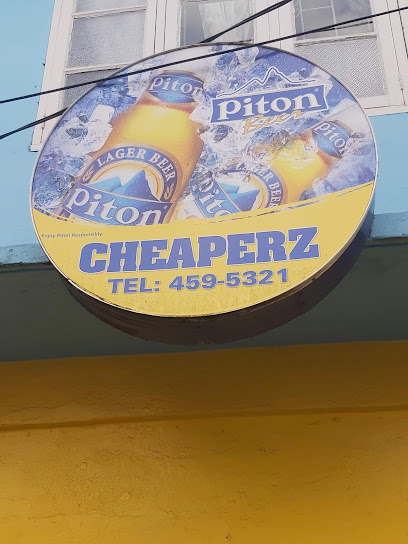
Acquinas's Bar
Experience the vibrant atmosphere of Acquinas's Bar in Malgretoute, St. Lucia, where tropical drinks and local culture come together.
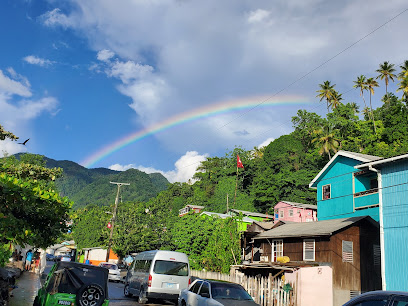
Genesis Entertainment Bar And Grill
Experience the lively spirit of St. Lucia at Genesis Entertainment Bar And Grill, where delicious cuisine meets vibrant atmosphere in Soufriere.
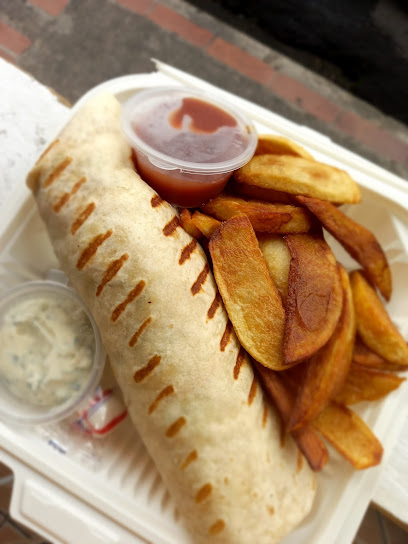
Harmony's Bar
Experience the vibrant atmosphere and local flavors at Harmony's Bar, the perfect spot for relaxation and socializing in St. Lucia.
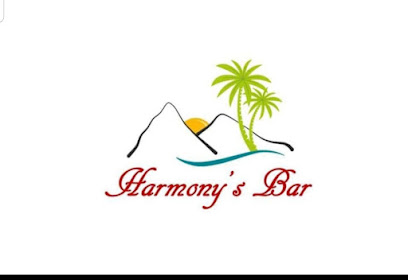
Seaview Disco
Experience the vibrant nightlife and breathtaking views at Seaview Disco, Soufriere's top bar for relaxation and fun.
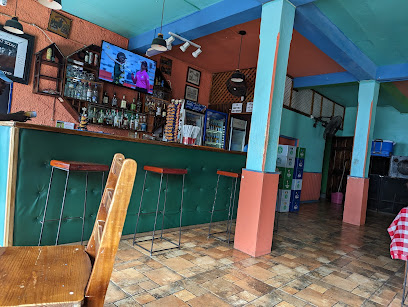
M.A. Mitchell Steve Bar
Experience the vibrant Caribbean spirit at M.A. Mitchell Steve Bar in Soufriere, St. Lucia, where drinks and local culture come together.
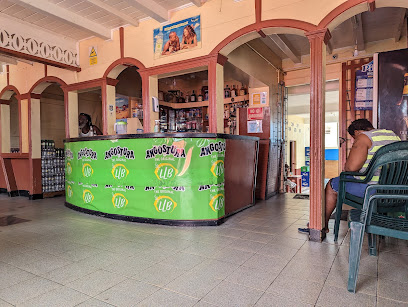
Our Toy Restaurant and Bar
Discover the vibrant flavors of the Caribbean at Our Toy Restaurant and Bar in St. Lucia – a culinary experience like no other.
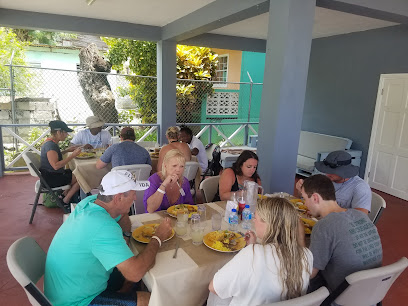
Angel’s Restaurant & Bar
Discover the vibrant flavors of St. Lucia at Angel’s Restaurant & Bar, where fast food meets Caribbean culinary delights in a relaxing atmosphere.
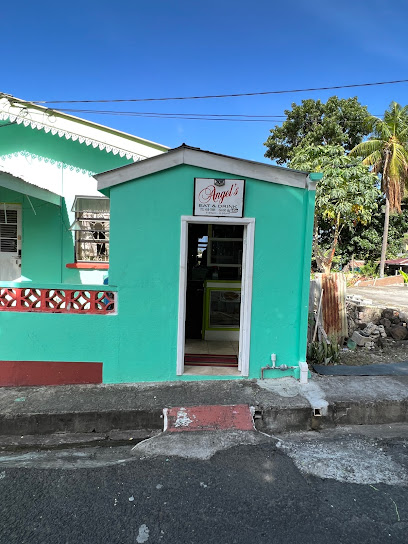
Juss Chill Bar and Restaurant
Discover Juss Chill Bar and Restaurant, where St. Lucia's vibrant culture meets delicious food and refreshing drinks in a family-friendly atmosphere.

Local Phrases about Soufriere
-
- HelloBonjou
[bon-jou] - GoodbyeOrevwa
[oh-rev-wa] - YesWi
[wee] - NoNon
[non] - Please/You're welcomeTanpri
[tahn-pree] - Thank youMèsi
[meh-see] - Excuse me/SorryEskize mwen
[es-kee-zay mwen] - How are you?Kijan ou ye?
[key-jan oo yay] - Fine. And you?Byen. E ou menm?
[byen. eh oo menm] - Do you speak English?Eske ou pale angle?
[es-kay oo pah-lay angle] - I don't understandMwen pa konprann
[mwen pah kohn-prahn]
- HelloBonjou
-
- I'd like to see the menu, pleaseMwen ta renmen wè meni a, tanpri
[mwen tah rehn-men way meh-nee ah, tahn-pree] - I don't eat meatMwen pa manje vyann
[mwen pah mahn-jay vyahn] - Cheers!Santé!
[san-tay] - I would like to pay, pleaseMwen ta renmen peye, tanpri
[mwen tah rehn-men pay-yay, tahn-pree]
- I'd like to see the menu, pleaseMwen ta renmen wè meni a, tanpri
-
- Help!Au secours!
[oh seh-coor] - Go away!Ale!
[ah-lay] - Call the Police!Rele Polis!
[reh-lay poh-leece] - Call a doctor!Rele yon doktè!
[reh-lay yohn dohk-tay] - I'm lostMwen pedi
[mwen pay-dee] - I'm illMwen malad
[mwen mah-lahd]
- Help!Au secours!
-
- I'd like to buy...Mwen ta renmen achte...
[mwen tah rehn-men ahk-tay] - I'm just lookingMwen jis gade
[mwen zjee gah-day] - How much is it?Konbyen sa koute?
[kohn-byen sah koot] - That's too expensiveSa twò chè
[sah twah sheh] - Can you lower the price?Ou kapab ba pri la anba?
[oo kah-pah bah pree lah ahn-bah]
- I'd like to buy...Mwen ta renmen achte...
-
- What time is it?Ki lè li ye?
[key lay lee yay] - It's one o'clockLi senkè
[lee sahn-kay] - Half past (10)Demi (10)
[deh-mee (dix)] - MorningMaten
[mah-tehn] - AfternoonApremidi
[ah-preh-mee-dee] - EveningAswè
[ah-sway] - YesterdayYè
[yay] - TodayJodi a
[zho-dee ah] - TomorrowDemen
[deh-men] - 1Yon
[yohn] - 2De
[day] - 3Twaz
[twaz] - 4Kat
[kaht] - 5Senk
[sahnk] - 6Sis
[sees] - 7Sèt
[set] - 8Uit
[weet] - 9Nèf
[nef] - 10Dis
[deece]
- What time is it?Ki lè li ye?
-
- Where's a/the...?Ki kote...?
[key koh-tay] - What's the address?Ki adrès la?
[key ah-dress lah] - Can you show me (on the map)?Ou kapab montre mwen (sou kat)?
[oo kah-pah mohn-tray mwen (soh kaht)] - When's the next (bus)?Ki lè pwochen (bis la)?
[key lay pwosh-ahn (bees lah)] - A ticket (to ....)Yon tikè (pou ....)
[yohn tee-kay (poo)]
- Where's a/the...?Ki kote...?
History of Soufriere
-
Before European colonization, the area now known as Soufriere was inhabited by the Arawak and Carib tribes. These indigenous people lived off the land, fishing in the Caribbean Sea and farming root crops. They left behind a legacy of petroglyphs and artifacts, some of which can still be found in the region today.
-
Soufriere's European history began in the mid-17th century when the French first landed on the island. They established Soufriere as one of the most important settlements, naming it after the nearby sulfur springs. Fortified structures and colonial buildings from this period still stand, offering a glimpse into the early days of French colonization.
-
During the 18th and 19th centuries, Soufriere thrived as a hub for sugar plantations. The labor-intensive sugar industry relied heavily on enslaved Africans, whose descendants form a significant part of Soufriere's current population. Ruins of old sugar mills and plantation estates are scattered throughout the area, serving as poignant reminders of this era.
-
Saint Lucia, including Soufriere, was a focal point in the colonial battles between Britain and France. The island changed hands 14 times between the two powers, earning it the nickname 'Helen of the West Indies.' Soufriere's architecture and culture still bear marks of this turbulent period, blending elements from both colonial powers.
-
In October 1780, Soufriere was struck by one of the deadliest hurricanes in Caribbean history. Known as the Great Hurricane of 1780, it caused massive destruction and loss of life. The catastrophe significantly impacted the community and the local economy, reshaping the landscape and rebuilding efforts that followed.
-
The iconic Pitons, Gros Piton and Petit Piton, are twin volcanic spires towering over Soufriere. In 2004, the Pitons Management Area, including the town of Soufriere, was designated a UNESCO World Heritage Site. This recognition underscores the area's unique geological and ecological significance, drawing visitors from around the world.
-
Known as the 'world's only drive-in volcano,' the Sulphur Springs are one of Soufriere's most famous attractions. The geothermal area features bubbling mud pools and hot springs, resulting from the dormant Soufriere volcano. Historically, the springs have been used for medicinal purposes, attracting both locals and tourists alike.
-
Soufriere is home to a vibrant cultural scene, deeply rooted in its Afro-Caribbean heritage. The town celebrates various festivals throughout the year, such as La Rose and La Marguerite, which honor the island's patron saints. These events feature traditional music, dance, and cuisine, providing a rich cultural experience for visitors.
-
Today, Soufriere is a bustling town that balances its historical legacy with modern tourism. The local economy thrives on agriculture, fishing, and tourism, with numerous resorts and eco-lodges attracting visitors. Despite modernization, Soufriere retains its old-world charm, offering a unique blend of history, culture, and natural beauty.
Soufriere Essentials
-
Soufriere is located on the southwest coast of Saint Lucia. The nearest international airport is Hewanorra International Airport (UVF) in Vieux Fort, approximately 45 kilometers away. From the airport, you can take a taxi or arrange for a shuttle service to Soufriere. The journey typically takes around 45 minutes to an hour by road. Alternatively, you can arrive through George F. L. Charles Airport (SLU) in Castries if you are taking regional flights. From Castries, it’s about a 1.5-hour drive to Soufriere.
-
Transportation within Soufriere is relatively straightforward. Local taxis are readily available and can be hailed on the street or arranged through your accommodation. Private car rentals are also an option for those who wish to explore at their own pace. Additionally, there are local minibus services that connect Soufriere to other parts of the island, offering a cost-effective way to travel. Keep in mind that driving is on the left side of the road in Saint Lucia.
-
The official currency in Saint Lucia is the Eastern Caribbean Dollar (XCD). However, US Dollars are widely accepted in most tourist areas, including Soufriere. Credit cards are accepted in many hotels, restaurants, and larger shops, but it is advisable to carry some cash, especially for smaller establishments and local markets. ATMs are available in Soufriere for cash withdrawals.
-
Soufriere is generally a safe destination for tourists, but it’s important to exercise standard precautions. Avoid walking alone at night in unfamiliar areas and keep your belongings secure. While Soufriere doesn’t have specific high-crime areas targeting tourists, being vigilant and aware of your surroundings is always a good practice. Petty theft can occur, so it’s best to leave valuables in your hotel safe.
-
In case of emergency, dial 911 for police, fire, or medical assistance. The local police station and medical facilities are available in Soufriere. It is recommended to have travel insurance that covers medical emergencies. For minor health issues, there are pharmacies in town where you can purchase over-the-counter medications. Ensure you have the contact information of your country’s embassy or consulate in case you need further assistance.
-
Fashion: Do dress comfortably and casually, but avoid overly revealing clothing, especially in more conservative areas. Religion: Do respect local religious customs and traditions, particularly when visiting churches or other religious sites. Public Transport: Do be respectful and patient when using local minibuses. Don't expect strict schedules, as the buses often leave when full. Greetings: Do greet people with a friendly 'hello' or 'good morning/afternoon'. A handshake is also a common form of greeting. Eating & Drinking: Do try local dishes and drinks, and accept food offerings graciously. Don’t refuse hospitality, as it is considered impolite.
-
To experience Soufriere like a local, visit the local markets where you can buy fresh produce and traditional Saint Lucian goods. Engage with locals, as they are often friendly and willing to share stories about the area’s history and culture. Don’t miss visiting the Soufriere Drive-In Volcano and the Sulphur Springs, which are unique attractions. For a truly local experience, consider joining a fishing trip or a cocoa plantation tour.
Trending Landmarks in Soufriere
-
Soufrière Drive In Volcano
-
Sugar Beach, a Viceroy Resort
-
Diamond Falls Botanical Gardens & Mineral Baths
-
St Lucia Sulphur Springs
-
Toraille Waterfall villas and atv
-
Tet Paul Nature Trail
-
Saint Lucia National Trust
-
Hotel Chocolat
-
Morne Coubaril Historical Adventure Park
-
Piton Falls
-
Gros Piton Nature Trail
-
Project Chocolat
-
Orlando's Restaurant & Bar
-
Fedo's
-
Petit Peak Restaurant
Nearby Cities to Soufriere
-
Things To Do in Malgretoute
-
Things To Do in Canaries
-
Things To Do in Choiseul
-
Things To Do in Anse la Raye
-
Things To Do in Marigot Bay
-
Things To Do in Laborie
-
Things To Do in Praslin
-
Things To Do in Micoud
-
Things To Do in Castries
-
Things To Do in Vieux Fort
-
Things To Do in Dauphin
-
Things To Do in Rodney Bay
-
Things To Do in Gros Islet
-
Things To Do in Georgetown
-
Things To Do in Chateaubelair












